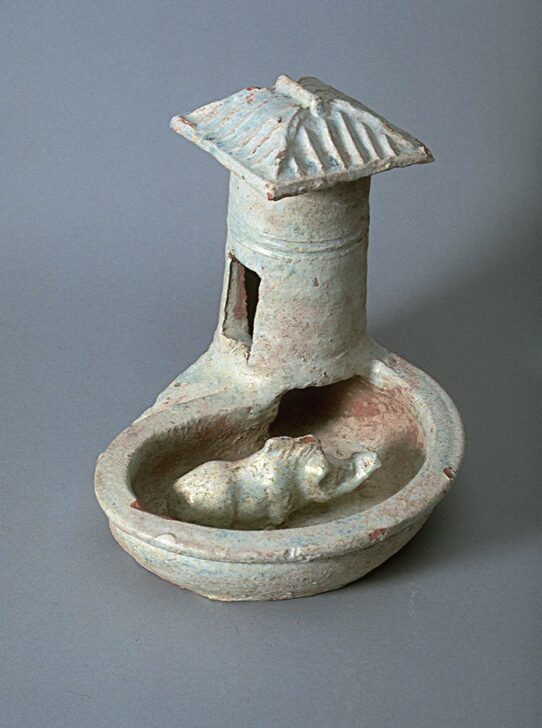Model of a pigpen
Chinese

Description
Subject Matter:
By the Western Han dynasty, basic household bowls, plates, basins, jars, etc. were produced in great quantity, not only for use in daily life, but also specifically for tombs as mingqi 明器 (literally bright objects), or grave goods, as a way to provide for the deceased. These mingqi included everything one would need during the afterlife, naturally, these objects reflected daily life during the Han. Mingqi could include houses, towers, gates, granaries, livestock pens, chicken coops, wells, cooking stoves, storage vessels, dishes, incense burners, lamps and figures such as horses, dogs, anthropomorphic animals, and people such as officials, guardians, servants and entertainers, and more. The number of ceramic mingqi items in a tomb could reach numbers of a few to several hundred objects.
During the Western Han, it was common for northern potters to create pigsties as mingqi. By the Eastern Han, a variety of domesticated livestock in their pens could be found in tombs. This particular model displays a variety of production techniques including wheel throwing and altering, molded parts, and hand sculpting.
Physical Description:
This red, earthenware, kidney-shaped pigpen contains one pig below a cylindrical tower shed with a door. It has peaked roof displaying ridges, and it is covered in a green lead glaze with iridescence and calcification.
Usage Rights:
If you are interested in using an image for a publication, please visit https://umma.umich.edu/request-image/ for more information and to fill out the online Image Rights and Reproductions Request Form.